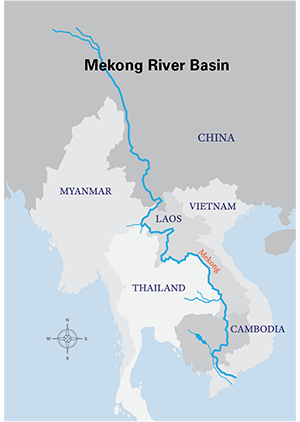Eugenia Saini is currently FONTAGRO’s Executive Secretary. FONTAGRO is the Regional Fund for Agricultural Technology. She leads the investment fund and a portfolio of 70 international operations related to science, technology, and innovation for the Latin America and the Caribbean region. She is from Argentina and is an agronomist by training. She holds a doctorate in agricultural sciences, specializing in total factor productivity analysis. One of her seminal works in this field was the estimation of 120 years of TFP for the agricultural sector in Argentina. She is also a National Public Accountant and holds an MS in Food and Agribusiness and an MS in Applied Economics, both from Universidad de Buenos Aires. She has worked in the private and public sectors, both nationally and internationally, especially in multilateral banks. She was awarded a Fulbright Scholarship at Cornell University and, more recently, with the Abshire-Inamori Leadership Academy (AILA) Scholarship at the Center for Strategic & International Studies (CSIS) in Washington, D.C.
Diversification for Resilience in Vietnam
Vietnam is the world’s second largest rice exporter, but rice productivity and output are threatened by climate change.

With its flat terrain averaging less than one meter above sea level, Vietnam and its neighbors in the Mekong River Basin are vulnerable to sea rise which is increasing the salinity of the water they use for rice production.
Upstream dams on the Mekong River, are restricting the flow of fresh water, which exacerbates the salinity of the waters downstream and create drought in other sections of the delta.
Taken together, these shifts threaten the region’s food security and environmental sustainability.
The Vietnamese government is providing new options for farmers to improve their agricultural practices and grow diverse, higher-value crops.
In 2000, the Vietnamese government encouraged farmers to adopt a rice-shrimp rotation system. Farmers raise shrimp during the dry season (February to June) and grow rice in the rainy season (August to December).
The wet season rainfall flushes some of the salinity from the soil during the period between harvesting the shrimp and planting the rice. New rice seed varieties enable farmers to increase yields in soils with higher salinity rates.

Public-private partnerships are also working to improve the quality of Vietnamese shrimp production.
Through training courses sponsored by USAID, farmers learn how to select high-quality post-larvae shrimp and to construct a shrimp nursery where young shrimp can be fed with approved nutritious starter feed.
This boost in the early stage of their life cycle helps shrimp grow more quickly to full weight and size, as well as become more resilient to sudden water stresses from salinity or temperature changes.1
- Vile, J. and S. Gustafson, “Adaptation of Rice-Shrimp Farming in the Mekong Delta: How Community Adaptation Solutions Can Inform Landscape Level Change,” Published by USAID, March 2016.


